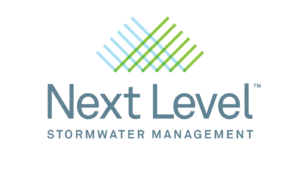Tackling the Issue of Bird Building Collisions
Photo credit Tim O’Connell, Wilson Ornithological Society

Our feathered friends are flocking back into our cities. Another sure sign of Spring!
Birds Canada estimates that over 600 species of birds, many of which are migratory, make Canada home. As they migrate, a staggering estimate of 25 million birds are killed in building window collisions across Canada, the second highest cause of death for birds after habitat destruction.
Green roofs may attract birds, therefore, it’s important to implement bird collision deterrent strategies at the green roof level.
As promoters of sustainable architecture, we want to bring the reader’s attention to how better protect our feathered friends. Architects, designers, planners, legislators and homeowners all play key roles in solving this problem.

Bird Friendly Best Practices
Expanded use of glass in modern architecture means the vast majority of Toronto’s new mid- to high-rise buildings contain more than 60% glass. Fortunately, there are solutions with many bird friendly glass options on the market. An effective approach is to combine visual markers with low reflectance glass, which appear as a solid object to the birds. Stained and frosted glass work well too. Additionally, UV glass that reflects and/or absorbs UV light appears solid to a bird, but clear to the human eye.
Learn More about Green Roof Design
Attend the webinar series NutsN’Bolts: A-Z of Essential and Practical Tips to Achieve Success
.

Slide from webinar Green Roof NutsN’Bolts: A-Z of Essential and Practical Tips.
Standards and Guidelines
Below are standards and guidelines to design bird-friendly, sustainable buildings to the benefit of humans, birds, and the natural environment.
Toronto’s Bird Friendly Guidelines: A World First
In 2007, City Councillors Glenn De Baeremaeker and Joe Mihevc introduced the Bird Friendly Development Guidelines, a world first. These guidelines along with Bird Friendly Best Practices Glass, were adopted and made mandatory for all new buildings in 2010. A companion book was issued in 2017 Best Practices Effective Lighting. These guidelines have since inspired many other cities across North America to adopt similar standards. Today, Nature Canada recognizes Toronto, Vancouver, Calgary, London and most recently Regina as certified a bird friendly cities.
Furthermore, coming May 2022, the Toronto Green Standard v4 (2022) will include Bird Collision Deterrence requirements for all new construction.
CSA’s for Bird Friendly Building Design Standard
The CSA A460:19 CSA Bird Friendly Building Design Standard was created with input from scientists, bird conservation groups (such as FLAP Canada), architects, property owners, and window manufacturers. It provides practical and effective guidance on reducing bird collisions at both existing buildings and new constructions.
Free view here. Purchase here.
Video of Earth’s Bright Lights at Night and Chris Hadfield’s Impressions from Space
Chris Hadfield, Colonel, Astronaut (ret’d), Torontonian:
Our Earth is a beautiful, ancient place. From high above, in orbit, our astronauts can see the entirety of it – the scars of prehistoric natural events, the traces of civilisations that have risen and fallen, and the many thriving centres of humanity today. But when the Space Station races behind the planet, into the blackness, the impact of humanity really stands out. Our primordial fear of the dark has led us to light the night, worldwide.
Without thinking, our outdoor lights not only shine where we want them on our streets and buildings, but also up, into the sky. Big cities like Toronto glow intensely, visible testaments to incomplete planning and wasted energy.
The impact is far-reaching. Nocturnal animals, wildlife mating instincts and migrating birds have their natural patterns disrupted. Fossil fuels are burned for no purpose. Glare exceeds the ability of the eye to properly use the created light.
The Northern Lights are rendered invisible. City children get a stunted intrinsic understanding of the night sky and the universe. Fortunately, the problem is largely solvable. Improved technology and public awareness can lead to policy changes that benefit everyone. Through incremental replacement and new constructionw e can efficiently shine the light, and the resources behind it, where we truly need it. And that’s better, for everyone.


 NLSM has supplied more than 2.5 M SQFT coast to coast
NLSM has supplied more than 2.5 M SQFT coast to coast
Comments are closed.